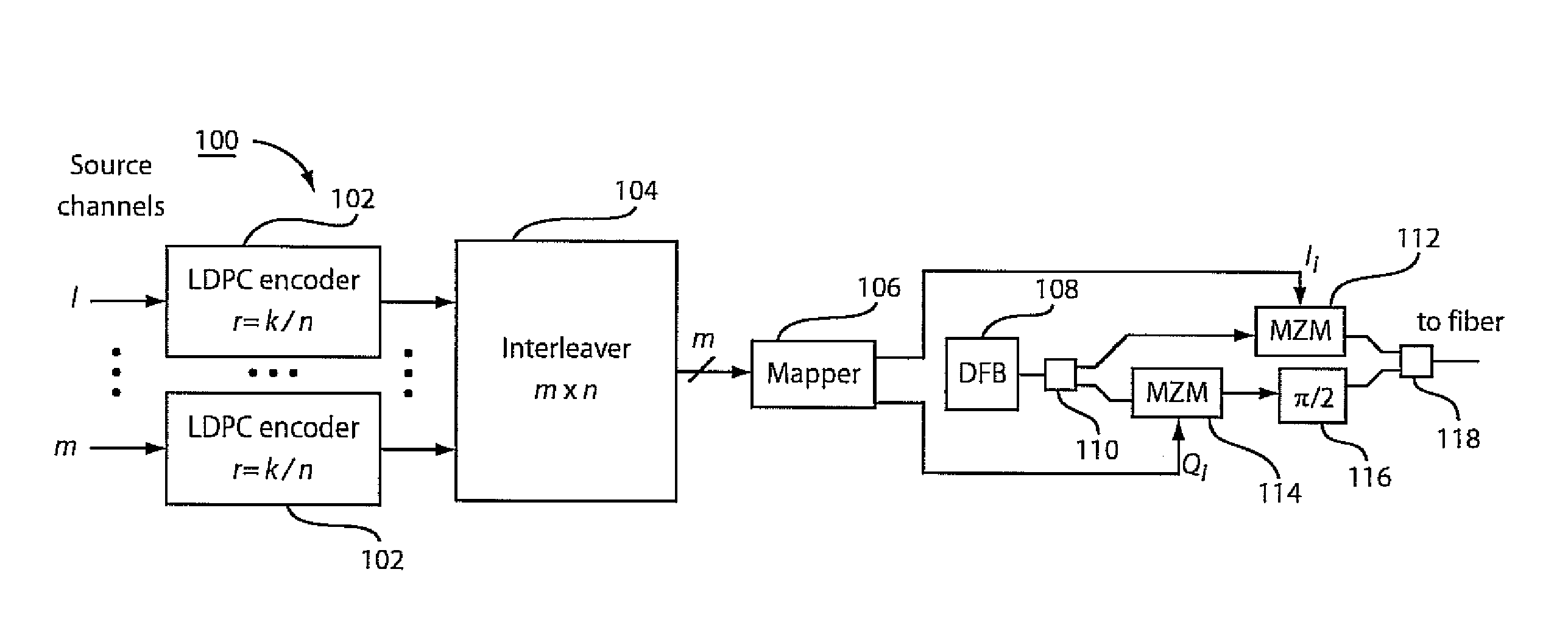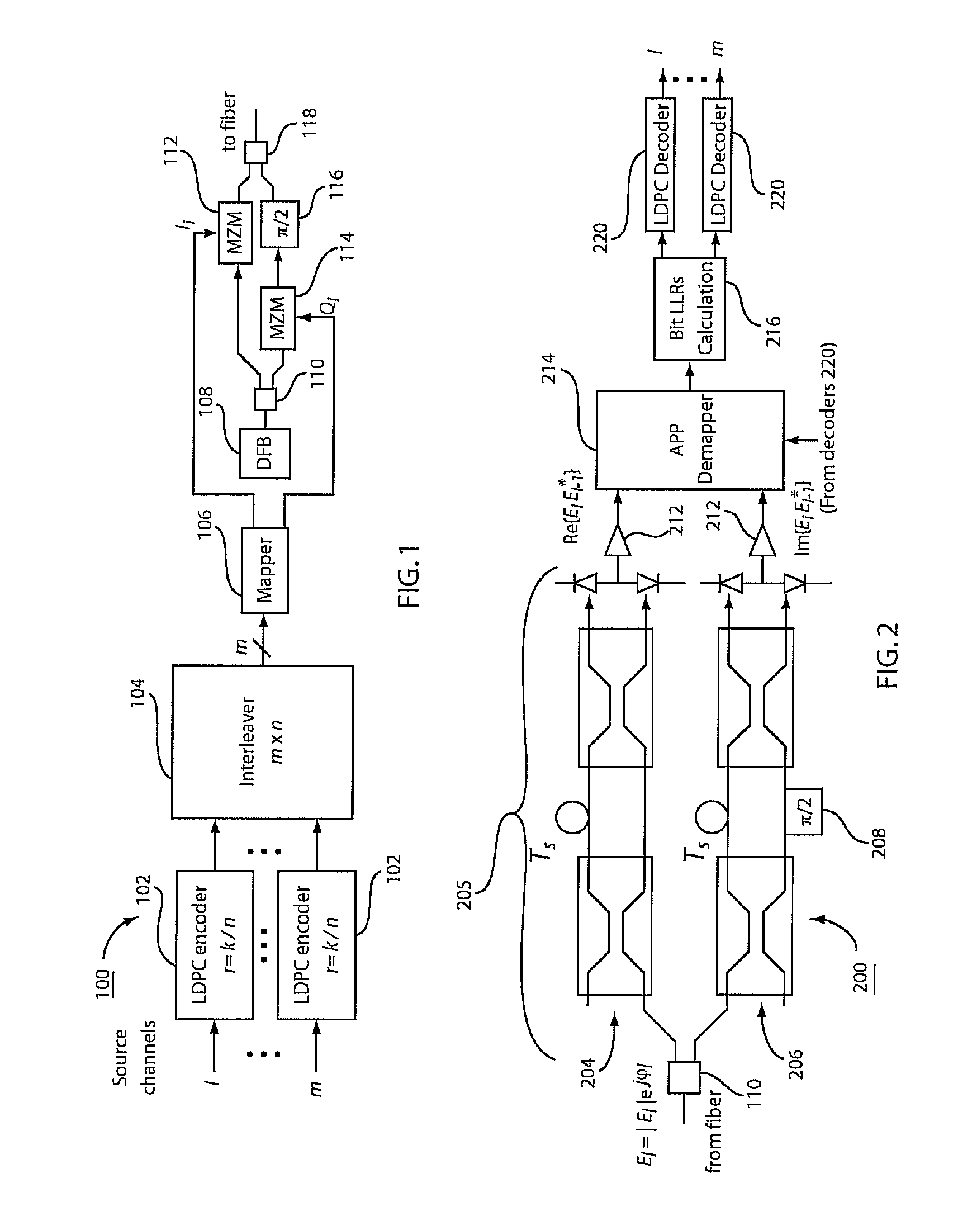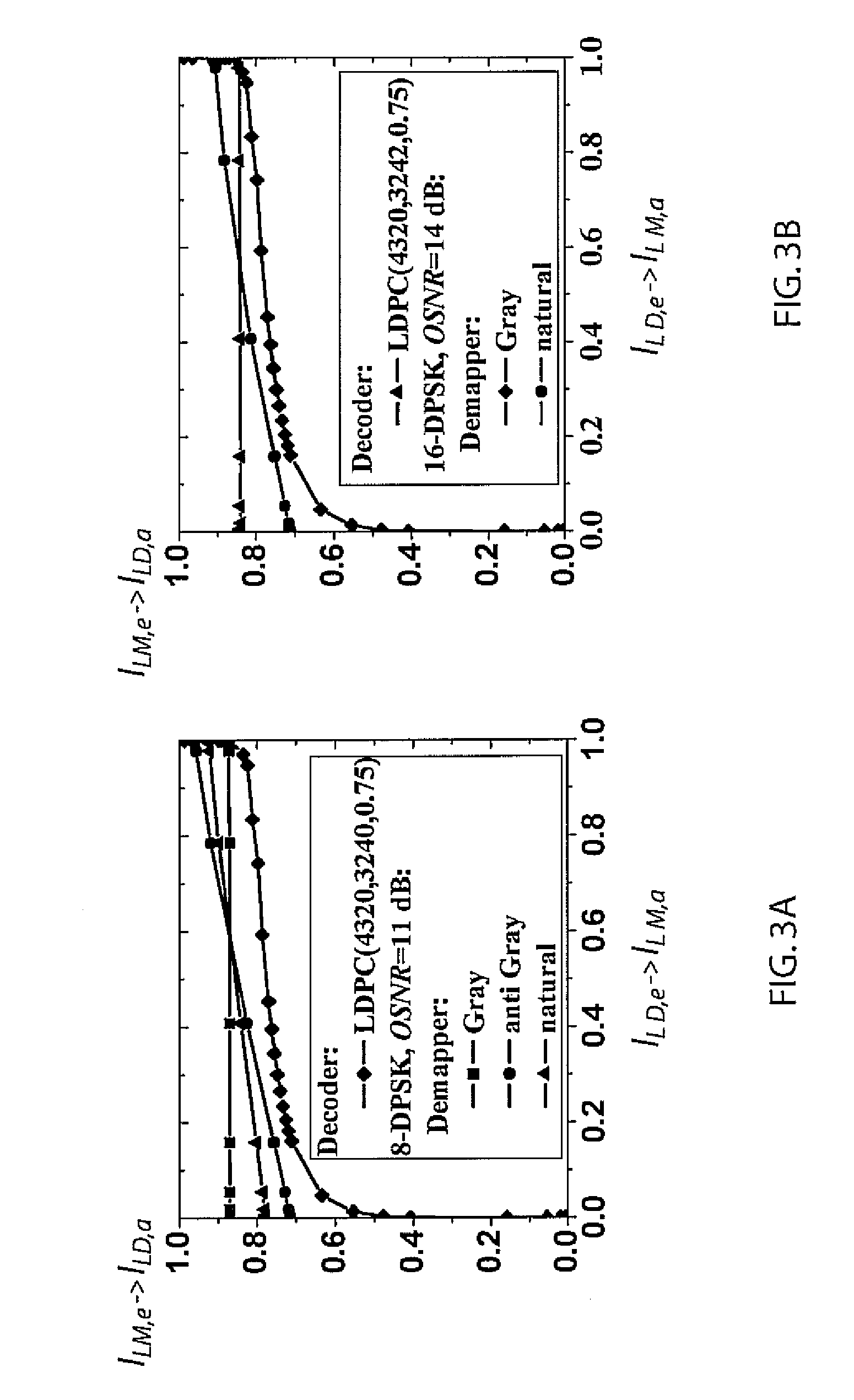[0006]In particular, direct detection of
differential phase-shift
keying (DPSK) with a Mach-zehnder
delay interferometer (MZDI) has generated significant attention. Return-to-zero (RZ) DPSK can facilitate the implementation of phase-shift
keying (PSK) and improve its tolerance to nonlinearities. To improve the
spectral efficiency of DPSK, the
transmitter and
receiver configurations suitable for 4-DPSK, 8-DPSK, and M-DPSK (M>8) may be proposed. These schemes are compatible with hard-decision
forward error correction (FEC) schemes.
Transmitter and
receiver configurations suitable for arbitrary M-ary DPSK and M-ary differential quadrature-
amplitude modulation (
QAM) (M>2) optical transmission may be provided. An efficient
coded modulation scheme, based on multilevel coding (MLC) with low-density parity-check (LDPC) codes as component codes, and parallel independent decoding (MLC / PID) coded modulation scheme provide excellent coding gains and good
spectral efficiency. The
spectral efficiency (defined in terms bits / symbol) is determined as the sum of code rates of component LDPC codes.
[0007]To improve the spectral efficiency of MLC / PID coded modulation schemes, the use of bit-interleaved LDPC-coded modulation is herein provided. In one a particular implementation of bit-interleaved coded modulation (BICM), the source bits coming from m independent sources are encoded using identical LDPC codes, interleaved, and multiplexed using M=2m-ary DPSK according to an appropriate mapping rule. One key difference with other
wireless applications includes the use of m identical LDPC encoders for each bit
stream operating at
bit rate Rb (e.g., 40 Gb / s), instead of only one
encoder operating at much higher
data rate mRb, which is not feasible in high-speed
optical communication systems, for large m.
[0009]An alternative technique to 100 Gb / s ETDM is presented herein, which allows >100 Gb / s optical transmission to be achieved using bit-interleaved LDPC-coded modulation, M-ary DPSK (e.g., M=8,16), and commercially available modulators and photodetectors operating at 40 Gb / s. A receiver architecture is composed of two components, a demapper and a LDPC decoder. The demapper is implemented as an
a posteriori probability (APP) demapper, and LDPC coder is based on an efficient implementation of a sum-product method /
algorithm. To improve the bit-error rate (BER) performance, iterative demapping and decoding is employed. To study the convergence behavior, extrinsic
information transfer (EXIT) chart analysis has been applied. To keep the complexity of LDPC decoder reasonably low for high speed implementation, block-circulant LDPC codes are applied. The LDPC-coded BICM scheme in accordance with the present principles is easier to implement than MLC / PID due at least to the fact that the same LDPC code is used for different source streams, and at the same time offers higher spectral efficiency.
[0011]A receiver includes a receiver input configured to resolve portions of an input
signal, and a demapper, which is configured to receive the portions of the
signal and determine symbol probabilities for the input signal. A plurality of decoders preferably implement a sum-product method. Each decoder includes a same low-density parity check (LDPC) code to enable iterative feedback in a form of extrinsic probabilities from the decoders, which is provided to the demapper such that the symbol probabilities and extrinsic probabilities improve bit-error rate performance.
[0013]Another receiver includes a receiver input configured to resolve portions of an input signal, a demapper configured to receive the portions of the signal and determine symbol probabilities for the input signal and a plurality of decoders implementing a sum-product method. Each decoder is implemented based on a
Tanner graph of a low-density parity check (LDPC) code such that all decoders are identical to facilitate iterative feedback in a form of extrinsic probabilities from the decoders, which is provided to the demapper, such that iteration of the extrinsic probabilities improves bit-error rate performance.
[0015]A method for receiving data includes receiving an input signal and resolving portions of the input signal; demapping the portions of the signal and determining symbol probabilities for the input signal; decoding symbols with a sum-product method with a plurality of identical decoders, each decoder implemented using a same low-density parity check (LDPC) code; and iteratively feeding back and forwarding extrinsic probabilities between the decoders and a demapper, such that iteration of the extrinsic probabilities is employed to improve bit-error rate performance.
 Login to View More
Login to View More  Login to View More
Login to View More 


